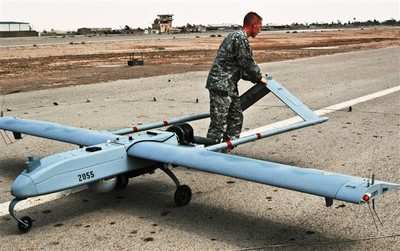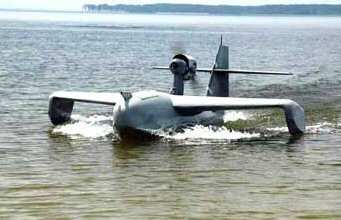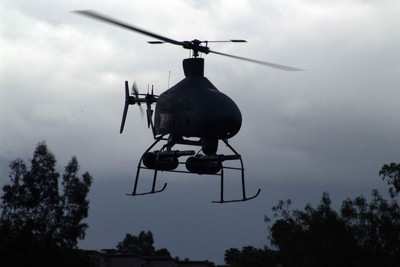Office Of Naval Research Works To Extend Human Intelligence To
Unmanned Systems
In less than a decade, UAVs have evolved from a curiosity on the
battlefield to a core ‘eyes in the sky’ resource for
the US military. And, as more UAVs enter the battlespace,
the systems will need to operate more intelligently and
autonomously, evading enemy hazards and adapting to the changing
mission conditions with reduced human intervention.

Shadow UAV In Iraq
To meet the challenge of how human knowledge can be transferred
to machine systems, Aptima and the Cognitive Engineering Research
Institute are developing MIMIC, the “Mixed Initiative Machine
for Instructed Computing,” a capability for capturing and
conveying to UAVs the flight control and decision-making expertise
lodged in the heads of humans.
MIMIC is being developed through a contract with the Office of
Naval Research (ONR), to help ONR to create a next generation of
intelligent UAVs that can operate more autonomously, allowing the
UAV for example, to infer mission threats and more quickly avoid
adversary actions, to self-launch or land, and to make necessary
flight control decisions when communications are disrupted, or the
human operator’s attention is divided amongst several
UAVs.

Sea Scout UAV Water Landing
MIMIC is a hybrid model that integrates psychological learning
theory and rapid machine learning algorithms to enable the human
operator to teach the UAV new tactical and flight control
behaviors. The research and experimentation that underlies MIMIC is
being conducted using Aptima’s DDD simulation environment. As
a multi-UAV simulator, DDD employs a unique user interface that
logs and tracks every interaction of the human UAV operator as
they’re engaged in a mission involving, multiple UAVs,
numerous target objectives and a myriad of constraints such as
weather, hazards, fuel, speed, and other aircraft.
Using software-based agents, MIMIC will build a mental model of
the human operator as they perform mission tasks, observing and
learning the flight control behaviors and tactical decision-making.
“The goal of automation is for the system to become aware of
the user’s intentions and objectives, such that it has
learned the ‘play,’ knows how to execute it, and can
facilitate or assist what needs to happen next,” said Nathan
Schurr, MIMIC Program Manager at Aptima.
Rather than the tedious step-by-step process of a human
attempting to train a UAV system, MIMIC’s agent-based
technology learns from a user’s actual behaviors, from which
it can then anticipate and predict when to automate a sequence of
actions or processes.

TAG Man-Portable Armed UAV
“Considering that it currently takes a team of people to
control a single UAV, the development of intelligent interfaces
will flip that model, elevating the human to a level where an
individual can operate and manage multiple unmanned
vehicles,” Dr. Schurr added.
Aptima, which applies expertise in how humans think, learn, and
behave to solving complex military problems was awarded MIMIC
through the Department of Defense Small Business Technology
Transfer Program (STTR), which provides early-stage R&D funding
directly to small companies working cooperatively with researchers
at universities and other research institutions.
 Unfortunate... ANN/SportPlane Resource Guide Adds To Cautionary Advisories
Unfortunate... ANN/SportPlane Resource Guide Adds To Cautionary Advisories ANN FAQ: Turn On Post Notifications
ANN FAQ: Turn On Post Notifications ANN's Daily Aero-Term (04.29.24): Visual Approach Slope Indicator (VASI)
ANN's Daily Aero-Term (04.29.24): Visual Approach Slope Indicator (VASI) ANN's Daily Aero-Term (04.28.24): Airport Marking Aids
ANN's Daily Aero-Term (04.28.24): Airport Marking Aids ANN's Daily Aero-Linx (04.28.24)
ANN's Daily Aero-Linx (04.28.24)





